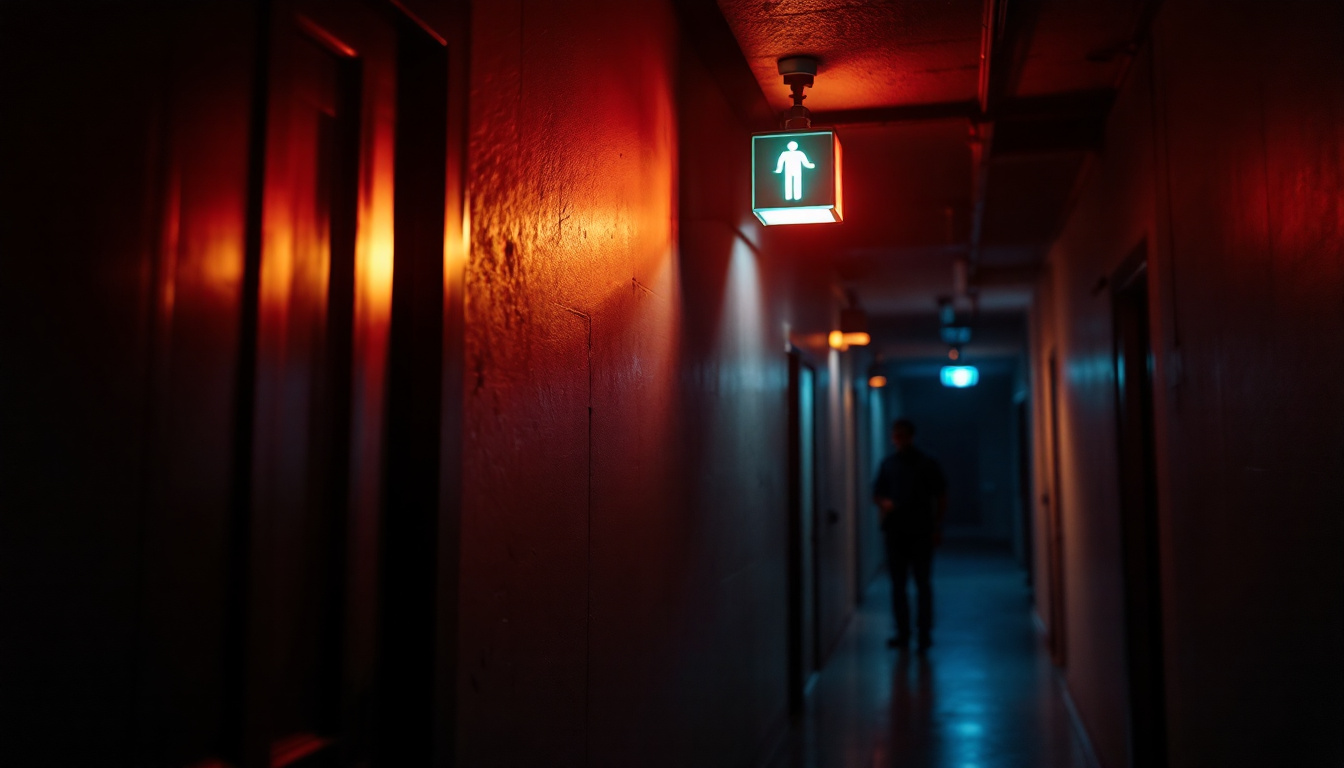
Outdoor motion detector lights have become an essential component in modern security and lighting solutions. For lighting contractors, understanding the underlying technology and science behind these devices is crucial for effective installation and customer satisfaction. This article delves into the various types of motion detectors, their working principles, and the factors to consider when recommending or installing these systems.
Motion detectors can be categorized into several types, each utilizing different technologies to detect movement. Understanding these categories helps contractors choose the right product for specific applications.
Passive Infrared sensors are among the most common types of motion detectors used in outdoor lighting. They detect infrared radiation emitted by objects, particularly living beings, within their range. When a warm body, such as a human or animal, passes in front of the sensor, the device registers a change in the infrared energy levels.
PIR sensors are favored for their low power consumption and cost-effectiveness. They are ideal for residential and commercial applications where energy efficiency is a priority. However, they may not detect movement through obstacles such as walls or large objects, which can limit their effectiveness in certain environments. Additionally, the placement of PIR sensors is crucial; they should be installed at an optimal height and angle to maximize their field of view and minimize blind spots. This makes them particularly useful in driveways, backyards, and pathways, where they can provide both security and convenience by illuminating areas only when needed.
Microwave sensors operate on a different principle, emitting microwave signals and measuring the reflection off moving objects. Unlike PIR sensors, they can detect movement through walls and other barriers, making them suitable for more complex installations.
These sensors are highly sensitive and can cover larger areas, but they are also more expensive and may require more careful calibration to avoid false alarms. For contractors, understanding the specific needs of the installation site is vital when recommending microwave sensors. They are particularly advantageous in environments where the detection of movement is critical, such as in warehouses or parking garages, where large machinery or vehicles may obstruct the line of sight. Furthermore, microwave sensors can be adjusted to different sensitivity levels, allowing for customization based on the surrounding environment and the expected level of activity.
Dual technology sensors combine both PIR and microwave technologies to enhance detection accuracy and reduce false alarms. By requiring both types of detection to trigger the light, these sensors offer a more reliable solution for outdoor lighting.
While they tend to be pricier, the investment can be justified in high-traffic areas or locations with a high risk of false alarms. Lighting contractors should weigh the benefits of dual technology against the specific needs of their clients to make informed recommendations. In addition to their reliability, dual technology sensors can adapt to various environmental conditions, such as changes in temperature or humidity, which can affect the performance of single-technology sensors. This adaptability makes them an excellent choice for diverse applications, from residential homes to commercial properties, ensuring that the lighting system remains effective and responsive to real movement while minimizing unnecessary activations.
The functionality of motion detectors is rooted in the principles of physics and engineering. Understanding how these devices work can aid contractors in troubleshooting and optimizing installations.
The primary mechanism for motion detection in PIR sensors involves the detection of infrared radiation. As mentioned earlier, these sensors are sensitive to changes in heat levels. When a warm object enters the sensor’s field of view, the change in infrared energy triggers the sensor, activating the connected lighting system.
Microwave sensors, on the other hand, utilize the Doppler effect. When the emitted microwave signals bounce off a moving object, the frequency of the reflected waves changes. This shift is detected by the sensor, which then activates the lighting. Understanding these mechanisms allows contractors to better position and configure the sensors for optimal performance.
Each motion detector has a specific field of view, typically measured in degrees. For instance, a PIR sensor may have a coverage area of 90 to 180 degrees, while some microwave sensors can cover up to 360 degrees. The field of view is crucial for determining how effectively a sensor can monitor a designated area.
Sensitivity settings also play a critical role in the performance of motion detectors. Many devices come with adjustable sensitivity levels, allowing contractors to fine-tune the detection range based on environmental factors. For example, a sensor installed in a windy area may need lower sensitivity to avoid false triggers from moving branches.
proper installation is key to ensuring the effectiveness of outdoor motion detector lights. Several factors must be taken into account to achieve optimal performance.
Choosing the right location for mounting motion detectors is essential. Ideally, they should be positioned where they have a clear line of sight to the area they are meant to monitor. Common mounting heights range from 6 to 10 feet, depending on the sensor type and the area being covered.
Contractors should also consider the surrounding environment. For instance, placing a sensor near trees or shrubs may lead to frequent false alarms. A clear zone of detection should be established to minimize obstructions and ensure reliable operation.
Outdoor motion detector lights can be hardwired or powered by batteries. Hardwired systems typically offer more reliability and are less prone to issues related to battery life. However, they require more complex installation and may necessitate compliance with local electrical codes.
For battery-operated systems, it is crucial to select high-quality batteries and consider the expected lifespan based on usage. Contractors should inform clients about the importance of regular maintenance and battery replacement to ensure uninterrupted operation.
Outdoor motion detectors are subject to various environmental conditions that can impact their performance. Lighting contractors must be aware of these factors to provide effective solutions.
Temperature fluctuations can affect the sensitivity of motion detectors. For instance, PIR sensors may become less effective in extremely cold conditions, while microwave sensors may be more reliable in such environments. Understanding the local climate and how it interacts with the technology is crucial for successful installations.
Additionally, weather conditions such as rain, snow, or fog can influence the performance of motion detectors. Contractors should consider these factors when recommending specific products and installation techniques.
Motion detectors can sometimes experience interference from other electronic devices, particularly those that emit electromagnetic signals. This interference can lead to false alarms or reduced sensitivity. Contractors should assess the installation site for potential sources of interference, such as wireless routers or other security systems, and recommend appropriate solutions.
Installing outdoor motion detector lights offers numerous benefits, making them an attractive option for both contractors and clients.
One of the primary advantages of motion detector lights is their ability to enhance security. By illuminating areas when movement is detected, they deter potential intruders and provide peace of mind for homeowners and business owners alike.
Moreover, the sudden illumination can startle trespassers, making them think twice before proceeding. This proactive approach to security is often more effective than traditional lighting systems that operate continuously.
Motion detector lights are inherently energy-efficient, as they only activate when needed. This feature not only reduces electricity costs but also extends the lifespan of the lighting fixtures. For contractors, promoting energy-efficient solutions can be a strong selling point to environmentally conscious clients.
Additionally, many modern motion detector lights are equipped with LED technology, further enhancing their energy-saving capabilities. This combination of motion detection and LED technology makes for an eco-friendly lighting solution.
Even with proper installation and maintenance, motion detector lights may encounter issues from time to time. Understanding common problems and their solutions can help contractors provide better service to their clients.
False alarms are a common issue with motion detector lights, often caused by environmental factors or improper installation. To mitigate this, contractors should educate clients on the importance of positioning sensors correctly and adjusting sensitivity settings to match the environment.
In cases where false alarms persist, it may be necessary to recommend dual technology sensors or more advanced models that can better differentiate between genuine movement and environmental triggers.
Inconsistent performance can stem from several factors, including low battery life, interference from other devices, or incorrect installation. Contractors should conduct regular maintenance checks to ensure that batteries are replaced as needed and that sensors are free from obstructions.
If performance issues continue, it may be worthwhile to reevaluate the sensor type and placement. In some cases, upgrading to a more advanced model may be the best solution.
Outdoor motion detector lights offer a blend of security, convenience, and energy efficiency that is hard to match. For lighting contractors, understanding the science behind these devices is essential for effective installation and customer satisfaction. By familiarizing themselves with the various types of motion detectors, their working principles, and the factors affecting their performance, contractors can provide tailored solutions that meet the unique needs of their clients.
As technology continues to evolve, staying informed about advancements in motion detection will further enhance the ability to deliver high-quality lighting solutions. Embracing these innovations will not only benefit contractors but also contribute to safer and more energy-efficient outdoor environments.
Ready to elevate your lighting projects with the latest in motion detector technology? Look no further than LumenWholesale for all your lighting needs. Our extensive catalog offers the highest quality, spec-grade lighting products at prices that simply can’t be beaten. Say goodbye to middleman markups and hello to superior performance and reliability for every installation. With free shipping on bulk orders, LumenWholesale is your go-to source for premium lighting solutions that blend quality, affordability, and convenience seamlessly. Don’t compromise on your lighting essentials—Wholesale Lighting at the Best Value is just a click away.

Discover essential tips for lighting contractors on how to avoid common pitfalls with RGB recessed lighting installations.

Discover innovative cost-saving strategies for lighting contractors using High Pressure Sodium (HPS) lamps.

Discover how P and M Lighting revolutionized the lighting industry with innovative solutions, industry insights, and key benefits. Stay ahead—read now!.

Discover the frequent pitfalls lighting contractors face when installing emergency lights.